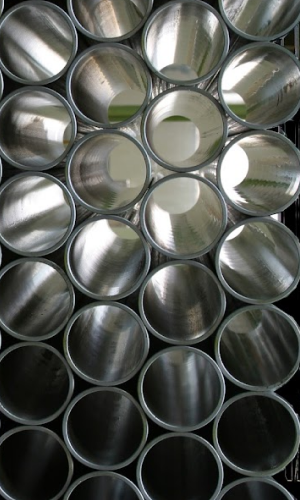Steelmaking has been practiced for thousands of years and has a rich history. Here is a brief overview.

Calculate the weight of pipes
Antiquity and the Middle Ages
The first attempts to produce steel took place in antiquity. These techniques were mainly based on a process culminating in the term “smelting and forging”. In this process, iron ore was placed in a hearth along with charcoal, then heated to a high temperature and then forged by hand on an anvil. The process was laborious and required a lot of manpower.
Great metallurgy
In the 16th-18th centuries, metallurgy developed, which enabled the production of larger quantities of steel. Blast furnaces fired with charcoal were used. This process was more efficient than smelting in small furnaces, but still involved depletion of forests.
Open smelting process
Developed in the early 19th century, the open smelting process involved melting iron in large furnaces, known as puddling furnaces. These furnaces had a flat, wide bottom, with fuel combustion chambers. This process enabled the production of larger quantities of steel and was used in the steel industry until the end of the 19th century.
Industrial revolution, Bessemer process
In 1856, Henry Bessemer developed a process that allowed steel to be made quickly and efficiently. The Bessemer process made it possible to obtain steel from molten pig iron. It was possible to produce a large amount of steel in a short time in this way.
Oxygen converter
In the 1860s, Sidney Gilchrist Thomas and Pierre-Émile Martin developed the oxygen converter, which became one of the most important steps in the production of steel. The oxygen converter allowed the removal of excess carbon and other undesirable impurities from the iron, which improved the quality and efficiency of steelmaking.
Electrical Converter Process (EAF)
In the 20th century, new technologies for steelmaking were introduced, such as the electric converter. This process was based on the use of an electric arc to melt raw materials, which allowed for more flexible steel production and chemical composition control.
Modern methods and technologies
Today, steel production uses advanced technologies such as arc furnace, gas blast furnace, continuous casting and many others. New methods and technologies enable the production of steels of various chemical compositions, sizes and properties, which makes steel a versatile and irreplaceable material in many fields.